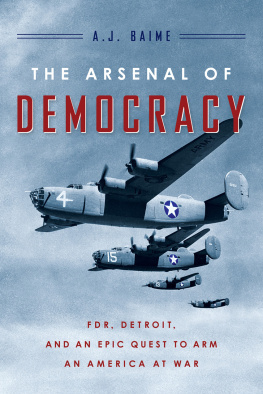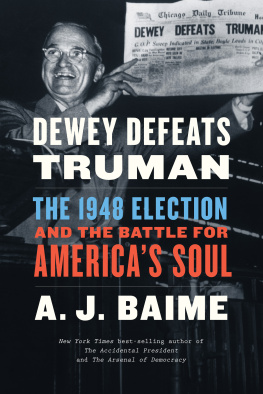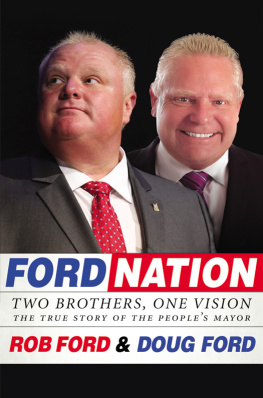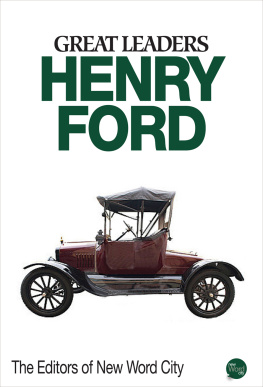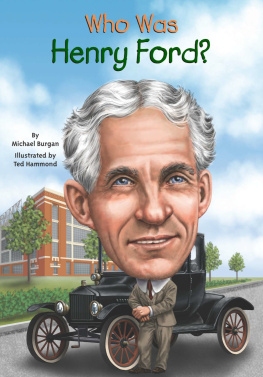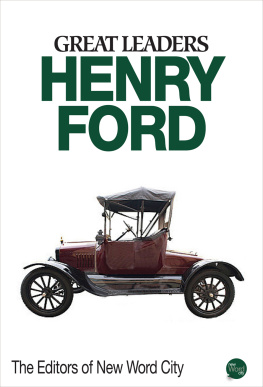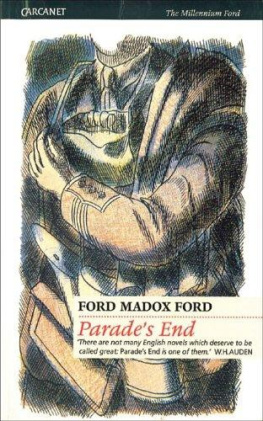HOUGHTON MIFFLIN HARCOURT
BOSTON NEW YORK
2009
Copyright 2009 by Albert Baime
ALL RIGHTS RESERVED
For information about permission to reproduce selections from this book,
write to Permissions, Houghton Mifflin Harcourt Publishing Company,
215 Park Avenue South, New York, New York 10003.
www.hmhbooks.com
Library of Congress Cataloging-in-Publication Data
Baime, A. J. (Albert J.)
Go like hell : Ford, Ferrari, and their battle for speed and glory at
Le Mans / A. J. Baime.
p. cm.
Includes bibliographical references and index.
ISBN 978-0-618-82219-5
1. Grand Prix racingHistory. 2. Sports carsUnited StatesHistory.
3. Ford, Henry, 18631947. 4. Iacocca, Lee A. 5. Shelby, Carroll, 1923
6. IndustrialistsUnited StatesHistory. 7. Automobile engineersUnited
StatesHistory. 8. AutomobilesUnited StatesDesign and constructionHistory. 9. Sports carsUnited StatesDesign and construction.
10. Ford Motor CompanyHistory. 11. Ferrari automobileHistory. I. Title.
GV1 029.15. B 35 2009
796.7'2'094417dc22 2008052948
This book was produced without endorsement from or obligation to any
corporation.
Book design by Brian Moore
Printed in the United States of America
DOC 10 9 8 7 6 5 4 3 2 1
I believe that if a man wanted to walk on water, and was prepared to give up everything else in life, he could do it. He could walk on water. I'm serious.
S TIRLING M OSS , race car driver, aearly 1960s
However one looks at it, Ford of Dearborn has set the cat among the pigeons. We are on the threshold of possibly the most exciting racing era in history.
Sports Illustrated, May 11, 1964
Contents
Introduction ix
Prologue xi
PART I: KINGS OF THE ROAD
1. The Deuce
2. Il Commendatore
3. Total Performance: Ford Motor Company, 1963
4. Ferrari, Dino, and Phil Hill: 19571961
5. The Palace Revolt: Italy, 1961
6. Ferrari/Ford and Ford/Ferrari: Spring 1963
PART II: A CAR IS BORN
7. Means and Motive
8. Il Grande John: Italy, Spring 19631964
9. The Ford GT40: JanuaryApril 1964
10. Loss of Innocence: AprilJune 1964
11. Le Mans, 1964
12. Aftermath: JuneDecember 1964
PART III: SPEED RISING
13. Henry II, Shelby, and Daytona: JanuaryFebruary 1965
14. 220 mph: FebruaryJune 1965
15. Le Mans, 1965
16. Le Mans, 1965: The Finish and the Fallout
PART IV: THE RECKONING
17. Survival: AugustDecember 1965
18. Rebirth: August 1965February 1966
19. Blood on the Track: MarchApril 1966
20. The Blowout Nears: MayJune 1966
21. The Flag Drops: June 1966
22. Le MansRecord Pace: June 18, 1966
23. The Most Controversial Finish in Le Mans History: June 19, 1966
24. The End of the Road: JuneAugust 1966
Epilogue
Acknowledgments
Notes
Index
THE 24 HOURS OF LE MANS 1966
CIRCUIT: 8.36 MILES

Introduction
In 1963, following a business deal gone sour, two industrialists from either side of the Atlantic became embroiled in a rivalry that was played out at the greatest automobile race in the world. In its broad strokes, this book chronicles a clash of two titansHenry Ford II of America and Enzo Ferrari of Italyat the 24 Hours of Le Mans. In its finer lines, the story is about the drivers who competed and the cars they raced to victory and, in some cases, to their doom.
The men whose names will appear form a list of automotive icons: Henry Ford II, Enzo Ferrari, Lee Iacocca, Carroll Shelby, Phil Hill, John Surtees, Ken Miles, Dan Gurney, Bruce McLaren, and a rookie named Mario Andretti. Equally as important is the automobile that is born in these pages: the Ford GT, a racing car that, more than forty years after it first made its mark, is still an automobile magazine cover staple. The car was designed and built for one reason: to beat the blood-red Ferraris on their home turf, during a time when Enzo Ferrari was enjoying the greatest Le Mans dynasty in history.
The 24 Hours of Le Mans was (and still is) a sports car race. But in the 1950s and 1960s, it was more than that. It was the most magnificent marketing tool the sports car industry had ever known. Renowned manufacturers built street-legal machines that would prove on the racetrack that their cars were the best in the world. Sports car races were as beautiful as they were dangerous, and none of them was more so than Le Mans. In 1964, the first year Henry Ford II fielded a car at the 24-hour classic, Car and Driver magazine called the event "a four hour sprint race followed by a 20 hour death watch." It was "probably the most dangerous sporting event in the world." A win translated into millions in sales. It was a contest of technology and engineering, of ideas and audacity.
No major American car concern since the Duesenberg brothers in the 1920s had won a major contest in Europe, where racing marques were fueled by decades of innovation on twisty, unforgiving courses. American stock car racingon oval speedwayswas a different game, involving less sophisticated drivers and cars. Success could only be achieved by the marriage of brilliant design and steel-willed courage. It would require a greasy-fingered visionary to run the show, a team of the most skilled drivers in the world, and the swiftest racing sports car ever to hurtle down a road. All things of which, the optimistic Americans believed, could be purchased with the almighty dollar.
Henry Ford Il's vision of his company as a Le Mans champion began as a marketing campaign, an investment he hoped would pay off at the cash register. In the end, it became something far more. Nationalism, glory, a quest to make history like no automotive magnate ever hadHenry II had discovered a way to conquer Europe in the unfolding era we now call globalism.
This is a work of nonfiction. All the events described in these pages actually occurred. The dialogue has been carefully reconstructed using countless interviews and contemporaneous accounts. Extensive notes on sources can be found in the endnotes.
Prologue
June 11, 1955
6:24 P.M.
Le Mans, France
H IS NAME WAS Pierre Levegh andsitting tight in the open cockpit of a silver Mercedes-Benz 300 SLR at the 24 Hours of Le Mansthe forty-nine-year-old Frenchman was about to become motor racing's most infamous man.
Two hours and twenty-four minutes into the race, Levegh found himself well behind the leaders. Coming out of a slight bend, he shifted from third to fourth gear and accelerated into a straight. The engine's exhaust note rose in pitch and volume, the wooden steering wheel throbbing in his hands. He was wearing goggles and earplugs, a United States Air Force fighter pilot helmet, blue trousers, light tennis shoes, and no seatbelt. Switching off with his teammate, the American John Fitch, he had nearly 22 hours of racing ahead of him, but already fatigue was gnawing at his discipline, his focus. He was alone in the cockpit; there was only himself and the car. Every intimationa tug on the wheel, a second guess on the pedalresulted in immediate response, fractions of a second gained or lost. On the dashboard, the tachometer needle arced across the gauge as Levegh accelerated past 135 mph, past 140.
Legions of fans crowded both sides of the pavement. A quarter of a million had come to this flat patch of central France to see what had been billed as a three-way battle for world domination between the silver Mercedes-Benzes, the green Jaguars, and the red Ferraris: the Germans, English, and Italians. No one had ever seen such beautiful cars travel so fast. Even at idle, they were the stuff of science fiction. Each ticket had a warning printed on it about the dangers of motor racing, but the spectators were otherwise occupied. The glamour of Le Mans was as intoxicating as the local wine.
Next page


